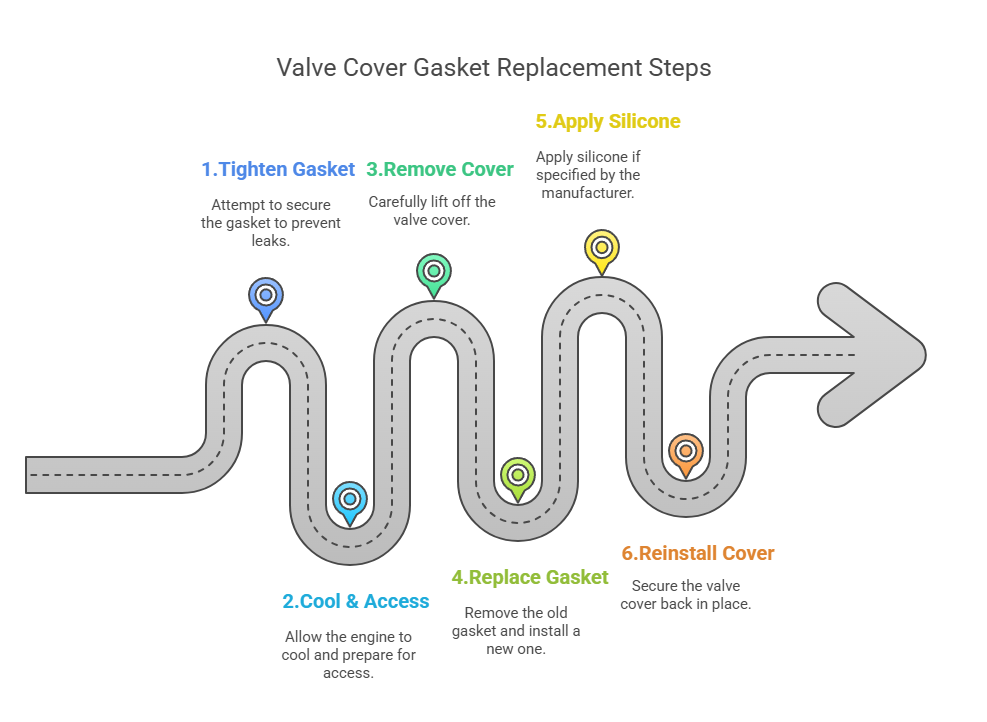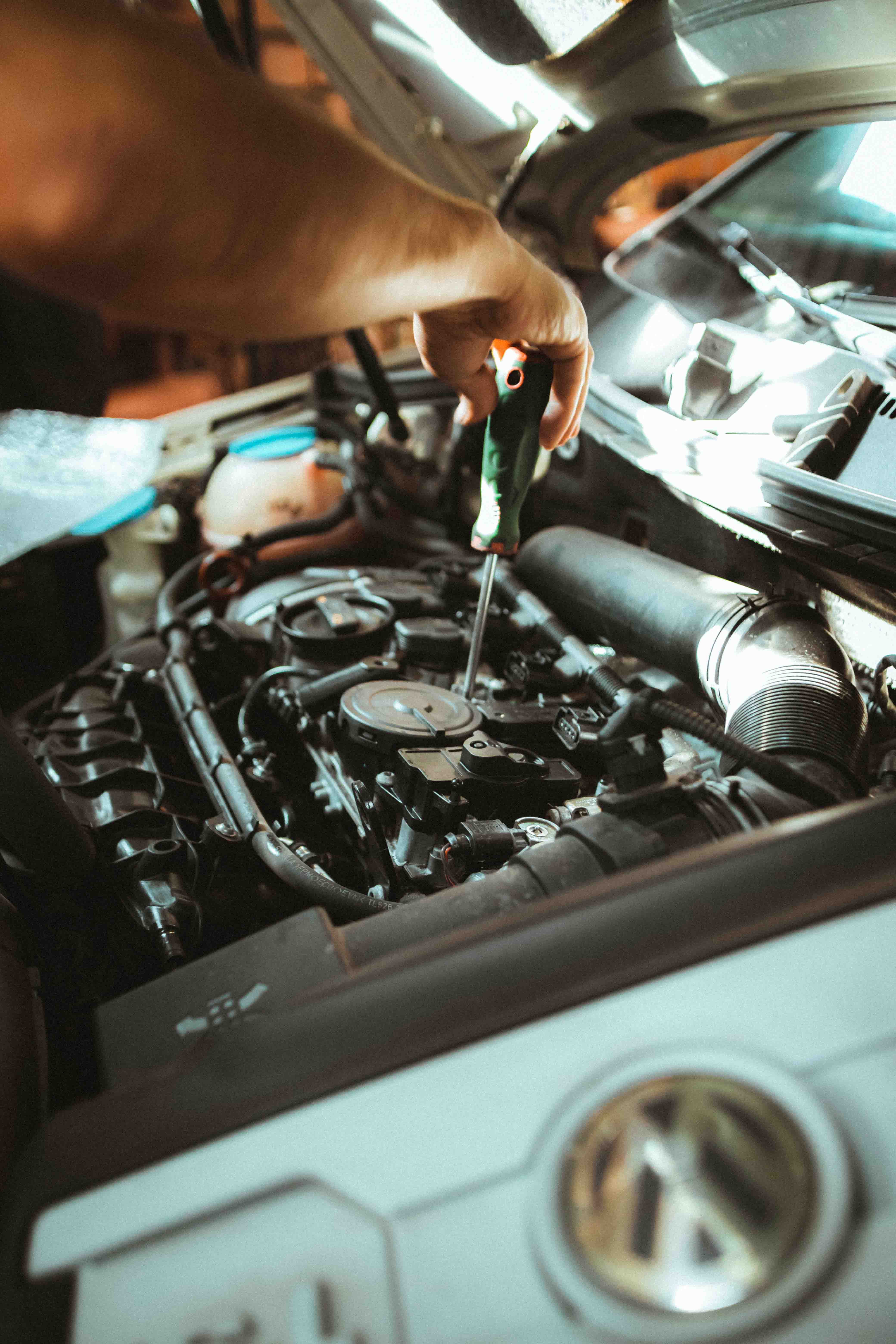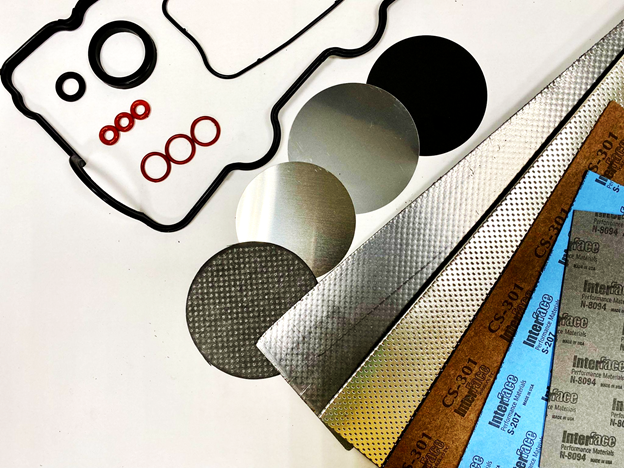- Signs of a faulty valve cover gasket
- What is the typical valve cover gasket replacement cost?
- Steps of the valve cover gaskets replacement
- Valve Cover Gasket FAQs
- Get a MEGA valve cover gasket
A valve cover gasket is an engine component designed to protect cylinder head hardware from the elements and prevent oil from escaping the engine. Typically, the gasket is made of plastic, rubber or cork to create a tight seal between the engine cover and engine, acting as a two-way barrier.
The valve cover gasket is an essential motor component. During operation, engine intake and exhaust valves open and close rapidly. This process generates a considerable amount of mechanical action, requiring a hot oil shower for lubrication. However, if the gasket becomes damaged, it can no longer maintain a seal between the oil and the valve cover, leading to engine damage. In the event of a failure, debris and small particles could get between the pistons and the cylinders, causing wear and tear to the components. Moreover, if engine oil escapes, then metal could grind against metal, shortening the life of the engine.
Signs of a faulty valve cover gasket
While manufacturers do their best to make gaskets that prevent engine oil from entering the motor, these components can fail over time. Engine oil is acidic, so it slowly eats away at rubber seals, fatiguing them. Once they fail, the oil is then free to circulate in other parts of the engine, causing damage.
A faulty valve cover gasket is not a problem that will leave a vehicle stranded at the roadside. However, at the same time, you can’t afford to ignore it for long. After a few dozen miles, the fault will begin to damage the engine and your maintenance costs will rise.
Identifying a faulty valve cover gasket is relatively straightforward. Here are some telltale signs that yours requires a service:
Low engine oil
A faulty valve cover gasket may allow engine oil to escape the motor, causing the “low oil” engine light to appear on your dashboard. If engine oil is low, it can lead to friction inside the engine, causing the engine temperature to rise, eventually leading to failure and even fires. If you notice the low oil light is on, you’ll want to check the status of the gasket first before moving onto other possible causes.
Burning smell
Cracked and worn valve cover gaskets accumulate compressed oil underneath which can then drip into other high-temperature areas of the engine, such as fuel intake or cylinder heads, leading to a burning smell. The odour is distinctive to any experienced mechanic and can lead to excess smoke in the exhaust when you switch on the engine.
Rough-running engine
In some cases, oil leaks from the gasket are so bad that they can drip down onto the spark plug galley and inside the plugs themselves causing misfires and engine performance issues. Sparks may, in some cases, ignite the oil, leading to fires. Engines may also fail to run smoothly and make strange sounds as you apply the gas.
What is the typical valve cover gasket replacement cost?
The typical total cost of a valve gasket replacement is around $110 - $340 depending on the make and model of the vehicle.
The parts cost very little - perhaps $10 to $40. The labour makes up the bulk of the cost: from $100 to $300.
Labor costs can vary significantly because of differences in valve cover gasket accessibility. Most manufacturers make valve cover gaskets that do not need any additional engine disassembly. However, some require the removal of other components, such as turbo plumbing, for servicing, adding to the overall cost.
Pricing also varies by location and even individual shops, so comparing prices in your area can help to bring the cost down.
Steps of the valve cover gaskets replacement
The signs of a faulty gasket are obvious: engines that spew out smoke, rough performance, and chronically low engine oil. However, replacing a faulty valve cover gasket involves following a careful, sequential process.
In general, locating engine oil leak problems can be tricky. There are many places where oil could escape. The telltale signs that the valve cover gasket is the culprit is:
- A gasket covered in oil
- Burning smell while the engine is running
Sometimes, valve cover gasket leaks can drain down the back of the engine, mimicking other kinds of leaks, such as oil pan or main seal leaks. However, you can usually rule these out quickly. A faulty gasket will usually only leak oil while the engine is running.
Learn more about MEGA oil pan gasket
If you believe that you might have a faulty valve cover gasket, monitor your engine closely and do not allow oil levels to drop below the manufacturer’s recommendations. As stated above, allowing an engine to run on low oil is dangerous and could cause catastrophic failure.
Here are the steps that you need to take to replace a faulty valve cover gasket:

Step 1: Try to tighten the gasket
In many cases, you may not have a faulty valve cover gasket at all. Instead, engine vibrations and oil action may have wriggled it loose over time, causing the seal to lose contact with the surrounding metal, allowing oil to escape.
Try tightening the gasket to the manufacturer’s specifications, preferably with a torque wrench and then see whether that prevents oil from leaking. If it does, then you can safely assume that you have dealt with the problem.
Please refrain from over tightening the gasket. If there is damage to the unit, overtightening will not prevent oil from escaping.
Step 2: Allow the engine to cool and gain access to the gasket
If the oil leak continues after routine tightening, then allow the engine to cool and follow service manual instructions to gain access to the valve cover. In most cases, the valve cover gasket is easily accessible. However, in turbocharged vehicles, you will need to remove the plumbing first. Once you do that, remove anything else in the way, including PCV hoses, spark plug brackets and throttle cables.
Step 3: Lift off the valve cover
Valve covers protect the engine from the elements and prevent oil leaks. Remove all of the valve cover bolts and lift the valve cover upwards and away from the rest of the components. If the valve cover does not want to move, try gently tapping it with a rubber mallet. This action will help to loosen the unit if fitted to a tight manufacturer specification.
When removing the valve cover, do not allow anything to fall into the engine. Make sure that you do not drop any tools into the internal compartment that might damage the surfaces. To prevent this, you may want to cover the engine with a rag.
Step 4: Remove the old valve cover gasket and fit the new one
Once you have access to the underside of the valve cover, remove the gasket and fit the new one. Most valve covers have a groove where the gasket sits, making it easy to replace by hand. If you need to use scrapers to remove the existing gasket, do not use metal as this could damage the underside of the unit, causing leaks. Silicone or plastic will suffice.
Step 5: Apply silicone if the manufacturer tells you do so
Whether you need to apply silicone to the new valve cover gasket depends on the manufacturer. Only apply silicone if the service manual asks for it. Otherwise, skip this step.
Before applying silicone, clean the entire surface of the valve cover, making sure that you remove all of the oil. After you apply silicone, make sure that you leave it to cure before you fire up the engine. If you don’t allow time for curing, it will fail, causing leaks.
Step 6: Re-install the valve cover
Once you replace the valve cover, re-install the gasket and tighten the bolts with a torque wrench to the recommended tightness. Do not overtighten as this may damage the new gasket.
Valve Cover Gasket FAQs
-
Is a head gasket and valve cover gasket the same?
No, a head gasket and a valve cover gasket are not the same. The head gasket sits between the engine block and cylinder head to seal the combustion chamber and maintain pressure. In contrast, the valve cover gasket seals the space between the valve cover and the top of the engine to prevent oil leaks.
-
How to tell if head gasket or valve cover gasket is bad?
To check if your head gasket or valve cover gasket is bad, look for common symptoms. A failing head gasket may cause white smoke from the exhaust, engine overheating, or coolant mixing with oil. For a valve cover gasket, the primary signs are oil leaks around the top of the engine and a burning oil smell.
-
Is a valve cover leak serious?
A valve cover leak can become serious if ignored. While it may start as a minor oil leak, it can lead to low oil levels, which can damage engine components and cause further issues if the oil drips onto hot engine parts, posing a fire risk.
-
Is a valve cover gasket a major repair?
Replacing a valve cover gasket is generally not considered a major repair. It’s a straightforward job for most vehicles and is less complex than other engine gasket repairs, though labor costs can vary based on engine design and accessibility.
Get a MEGA valve cover gasket
Are you looking for quality valve cover gaskets? Then you’re in the right place. Here at MEGA, we offer a massive selection of quality replacement gaskets for many makes and models of vehicles. Gasket materials include silicone, cork, ACM, NBR, viton and more. Auto parts are available for a wide array of manufacturers, including Nissan, Toyoto, Mazda, Honda and others. Check out our gasket selection guide : Concise Gasket Material Types For Gasoline And Selection
MEGA has been supplying quality auto parts since 1979. Our gasket kits are now renowned and admired across the world for their quality and longevity. Our two main brands: MEGA and SUPERSEAL take engine gasket performance to new levels, providing drivers, businesses and other vehicle users with unrivalled reliability.
MEGA Gasket manufacturers and supplier are among the leading after-market options around the world. As a Taiwan-based business, we aim to deliver quality at a reasonable price, helping more motorists reduce the long-term maintenance cost of owning their vehicles.
CONTACT US This email address is being protected from spambots. You need JavaScript enabled to view it.
 |
Author: MEGA Gasket established since 1979, granted ISO 9002 in 1999 and updated to ISO 9001:2015 in 2017, and the main production is for automobile and all kind of engine gaskets. MEGA have profuse experience and good reputation in Taiwan. Learn more about MEGA Gasket manufacturer and supplier. |





